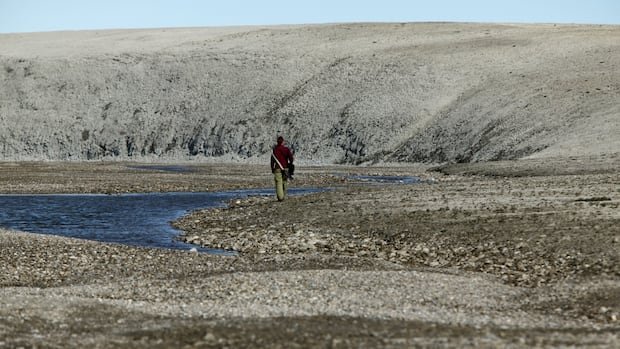A team of scientists analyzing a 21 to 24 million-year-old rhino fossil from Haughton Crater on Devon Island in Nunavut has unearthed the oldest recoverable ancient proteins to date. The discovery, made from proteins extracted from a rhino tooth found several decades ago, surpasses any previously recoverable ancient DNA by a factor of ten. Danielle Fraser, the head of paleobiology at the Canadian Museum of Nature and a key researcher in the study, highlighted that advancements in technology enabled the precise dating of these proteins back into “deep time,” paving the way for future paleontological endeavors in extreme cold environments to obtain comparably well-preserved fossils.
Traditionally, reconstructing evolution was constrained to four-million-year-old samples, with identified ancient proteins reaching only as far back as the middle-late Miocene era, approximately 10 million years ago. The exceptional preservation of the rhino fossil’s proteins was attributed to the dry, cold conditions of the high Arctic and the durability of tooth enamel. Scientists successfully extracted and sequenced data from these proteins within the tooth in a laboratory in Copenhagen.
Fraser emphasized the unique role of the Arctic’s freezing conditions in preserving proteins over extended periods, expanding the understanding of evolution much further back in time than previously assumed. The study focused on analyzing highly-preserved fossils through ancient proteins rather than morphological features to trace the evolutionary trajectory of extinct species. This approach, Fraser explained, offers valuable insights into the origins and evolution of rhinos, shedding light on debates about their geographical origins in Asia or North America.
Rhinos are believed to have diverged from other rhinocerotids during the Middle Eocene-Oligocene period, between 25 and 41 million years ago. The research findings support the divergence of two main subfamilies of rhinos, Elasmotheriinae and Rhinocerotinae, with bone analysis indicating a more recent split around 22 to 34 million years ago. The Haughton Crater’s distinct environment on Devon Island holds promise for future studies on preserved proteins due to its unique preservation conditions.
The rhino fossil, collected in 1986 by the late Mary Dawson, a vertebrate paleontologist from the Carnegie Museum of Natural History in Pittsburgh, was obtained at a time when protein extraction and ancient DNA technologies were not advanced. Recent collaborations with local community members, such as Jarloo Kiguktak from Grise Fiord, Nunavut, have facilitated fossil collection in the region.
The study’s methodology involved sequencing enamel proteins from the rhino fossil and analyzing over 1,000 amino acid chains to confirm their ancient origins based on age-related damage consistent with burial conditions more than 20 million years ago in the Arctic. The resilience of dental enamel, as the hardest vertebrate material, safeguarded the proteins from degradation over time.
Fraser underscored the significance of these findings in reconstructing molecular patterns from the fossil record, emphasizing the pivotal role of paleontology in understanding the ancient world and long-term animal responses to climate changes.


